Promoting international research mobility and creating international talent circulation is an essential condition for robust research and development. To this end, it is important to internationalize the research ecosystem, promote international human resource exchange, and ensure that Japan is firmly integrated into the international brain circulation network. Under this special topic, we will introduce the current status and challenges of Japan's research efforts to promote international brain circulation to produce outstanding research results as well as the attractiveness of Japan's research environment, which is the key to attracting foreign researchers, through a series of interviews with relevant people in the field. In this interview we spoke to Dr. Shakti P.C., Chief Expert Researcher at National Research Institute for Earth Science and Disaster Resilience (NIED).
Japan, a country located in the Pacific Ring of Fire, is no stranger to natural disasters. It experiences earthquakes, volcanic eruptions, and tsunamis on a regular basis. It also faces the annual threat of typhoons and heavy rainfall, which can lead to floods and landslides. These natural disasters have caused significant damage to infrastructure, loss of life, and economic losses. Despite these challenges, Japan has made great strides in minimizing their impacts, becoming one of the most disaster-resilient countries in the world through the development of advanced early warning systems, resilient infrastructure, and education and training programs for the public. However, there is still room for improvement, and Japan is constantly working to develop new technologies and strategies to protect its people from natural disasters.
National Research Institute for Earth Science and Disaster Resilience (NIED) is one Japanese institute that is undertaking studies into these events and is working on the realization of a society resilient to natural disasters. We spoke to Dr. Shakti P. C., Chief Expert Researcher of the Storm, Flood and Landslide Research Division at NIED, a Nepalese national who is highly involved with radar-based rainfall observation research, about the motivation behind his interest in rainfall and disaster-based research, his experience of undertaking research both in Japan and abroad, and his views on the importance of International Brain Circulation and global research mobility.
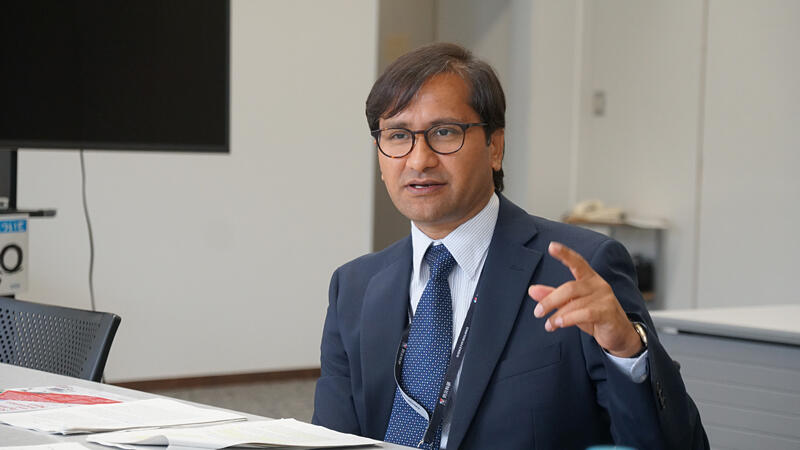
A childhood surrounded by the mountains and rivers of Nepal leads to earth science
Shakti was born in Sandhikharka, a village nestled into the picturesque Lumbni province in Nepal, surrounded by mountains, hills and rivers and lying close to the famous birthplace of the Lord Buddha. He spoke fondly of his childhood, mentioning his strong connection with the natural landscape of his home village. Every day on his way to school he had to cross a small river, however, during the monsoon season, the river would swell and flood, and Shakti and his schoolmates were prevented from entering it if it exceeded a certain threshold. Nevertheless, the villagers grew so accustomed to floods that they sometimes dared to swim in the dirty water because there was no any other option.
It was this experience that Shakti attributed to his initial interest into hydrology and meteorology, "There was no bridge at the time, and we would just cross together with our schoolteacher. My grandfather often suggested that we have to do something about these floods and the landslides that would accompany them. These were big problems at the time. When I grew up, I would often remember what he would say, and so I entered the earth science field."
After completing schooling in his hometown, Shakti moved to the capital of Kathmandu to pursue further studies at Tribhuvan University, the oldest and largest university in Nepal. The experiences that he had in childhood led to his interest in delving into the mechanics behind hydrology and meteorology, and so he undertook a Bachelor of Science, which he followed up with a masters, completing his studies in 2002. He was a diligent student, receiving the highest marks in his department and as a result was awarded the Mahindra Bidhya Bhusan (Kha) Gold Medal upon completion of his master's degree, a commendation given by the then Nepalese king (the monarchy was abolished thereafter in 2008). Following this, Shakti embarked upon a teaching career, remaining at his alma mater, where he taught undergraduate and graduate courses for 5 years.
During his time teaching, he became involved in various research and field experiment studies. This opened Shakti's eyes to his desire to study the field further, and so he began to search for other opportunities abroad. As the education fees overseas were expensive, he had to explore scholarships, but he was lucky enough to receive a Belgium government scholarship which allowed him to take an international master's course in Water Resources Engineering at Katholieke University in Belgium. "The course was really tough. It was a classical master's course with a lot of lecture style classes in the English medium where the professor would come in, teach us new things and then ask questions. We would immediately understand if we had passed or failed. It was a very good experience." He said, commenting on his time in Europe. "The course was comprised of students from various countries of Africa and East and South Asia. It was challenging, but a very valuable experience and provided an excellent opportunity to delve into hydrological modelling, and in particular, I analyzed the radar rainfall data of some historic events, a fairly new topic, for the first time there."
Following this experience in Europe, He returned home for personal reasons, and it was during this time that he came across a number of research papers into radar rainfall from Japan. "That was very much the influencing factor for me to gain more of an interest in this field." Although, even as a child Shakti knew about Japan, it was only when he came to the country that he came to realize that it shares a number of geological familiarities with Nepal, with high mountain coverage (75% in Nepal, and 73% in Japan) and experiences similar weather and disaster phenomena. It was here that he came across Professor Masayuki Maki for the first time, a man who would have a profound impact on his future research career.
"Dr. Maki was a key figure in weather radar observation and radar meteorology. His papers and innovations piqued my interest, and so I initiated conversations with him." Shakti took a proactive approach and made contact with Maki, who was Head of the Storm, Flood and Landslide Research Division at NIED and concurrently a professor at the University of Tsukuba at the time. From this contact and subsequent discussions, he decided to pursue a PhD. in Japan and arrived in 2010. "Recently, there has been a rapid expansion in the use of operational X-band polarimetric weather radars in urban areas to monitor localized heavy rainfalls that cause urban flash flooding. However, mountainous regions still present challenges for obtaining estimates of precipitation because of their high elevations and complex topographic configurations. Japan is generally a mountainous country, with about 80% of its area covered by mountains. In these mountainous regions, the probability of radar beam blockage is higher. This was a significant issue due to the nature of Japan's geography, and after discussions with Dr. Maki, I made this the focus of my PhD."
According to Shakti, in Europe, the most widely used type of radar to measure rainfall is in the C-band (designated 4−8 GHz). This is because the long wavelength of C-band radar allows it to penetrate through more precipitation and other objects which works well in the local weather conditions where the land is geographically flat, and mountains are few and far between. However, he found that this frequency of radar was insufficient in Japan, where rainfall is often extremely heavy and dense, because it suffered from partial beam blockage, which is a common problem in mountainous areas and results in errors due to reflectivity biases.
This became the target of his research, and he released a paper titled 'Estimating rainfall amounts in mountainous regions using X-band dual polarization radar' where he delved into the use of X-band radar (8−12 GHz) which is more suitable for Japanese environmental conditions. This is because X-band radar has a higher frequency than C-band radar meaning that it is better for detecting smaller objects, creating more detailed images, and getting a more detailed view of weather systems, allowing for better detection in Japan's geographical environment.
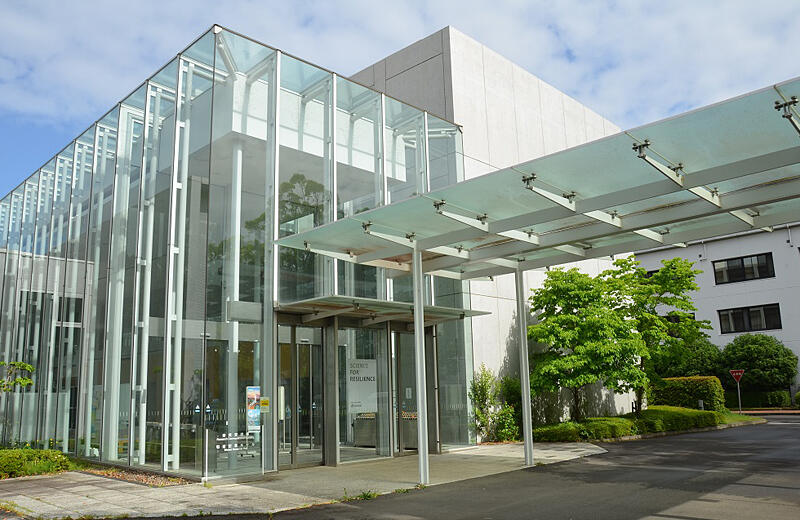
Provided by NIED
Throughout his research, he was afforded access to the facilities of NIED, undertook collaborative research with members of staff and utilized this data for his research. "I worked closely with NIED members, particularly with those at the Storm, Flood, and Landslide Research Division, which focuses on developing new methods in my field. Towards the end of my PhD., a contractual position for two years became available at NIED, for a major international project, named TOMACS (Tokyo Metropolitan Area Convection Study for Extreme Weather Resilient Cities). I was fortunate enough to be selected to take part." His main role was to conduct rainfall "nowcasting," an estimation for a very short period of time (within a single hour, for example), while forecasting normally covers for a longer period. For this project, he worked with many key international researchers from different countries and made a mission trip for about a month to Australia to work with the Australian Meteorology Bureau. His work was greatly appreciated as he introduced ensemble rainfall nowcasting in Japan for the first time.
Since then, Shakti continued working at NIED on various projects such as the SIP (Strategic Innovation Promotion Program) led by the Government of Japan, particularly on the theme of disaster risk reduction and mitigation functions.
From his experiences as a child in Nepal and studying abroad in Europe and now as a permanent researcher at NIED, Shakti has benefited greatly from the dynamics of international research mobility and his international experience has been a significant factor contributing to his research work. Having worked on various projects since joining NIED in 2013, he has become a Chief Expert Researcher as of this year and his studies into hydrology and meteorology continue in earnest.
Insights into weather-related disasters as a researcher at NIED
When we asked Shakti about his work at NIED, he stated proudly that he has contributed to 29 publications that have been released in both national and international journals, serving as the first author for 22 of these. The main themes of this research are focused on weather-related disaster issues.
His first topic was focused on radar-based quantitative precipitation estimation (QPE) in mountainous regions, and a large part of this focused on correcting reflectivity resulting from partial beam blockage. "An impactful outcome from this study was the development of the 'Modified DEM method' which aimed to correct biased reflectivity due to partial beam blockage, and this was tested using observations provided by a private company here in Japan." Shakti recalled. "I subsequently became involved with weather radar for heavy rainfall events in the Kanto region, and I believe that I can continue to contribute to the creative development in the field."
NIED's aim to develop a society resilient to natural disasters links back to Shakti's research in a very significant way. Japan has faced a number of significant rainfall events in recent years, and the impacts of the flooding associated with them fall under the theme of his research. Examples of these events are flooding events at the Kinugawa, Oda and Kuji rivers in various areas of Japan, together with recent flooding event in Kyushu in 2020.
Shakti happily shared a few of his successful research outcomes with us. The new multidisciplinary approach that he adopted led to a wide range of developments. Of particular note is the flood inundation tool that was developed as a result of his research. He proposed a new approach to accurately extract geometries of rivers and developed a flood inundation extent mapping tool.
In the JSPS (Japan Society for the Promotion of Science)-funded project for which he served as PI, he also proposed a new technique that utilizes Hi-net data (a nation-wide high-sensitivity seismograph network) to identify the timing and peak discharge of flooding events. Dense seismological observations are undertaken at more than 800 sites installed all over Japan, including in mountainous areas. He extracted noise derived from these seismological observations, and at the same time, conducted hydrological simulations. Then he compared both the seismic nose and hydrological data and found that if good correlations occur, then seismological noise can be directly converted into water levels or water discharge. That information can be made use of in flood events. By remotely analyzing seismic data in mountainous areas, to which we usually cannot directly access, we can predict flooding moving downstream. Such information is invaluable for protecting human lives and other things. This is an original idea produced through his multidisciplinary research, particularly in collaboration with the earthquake division at NIED.
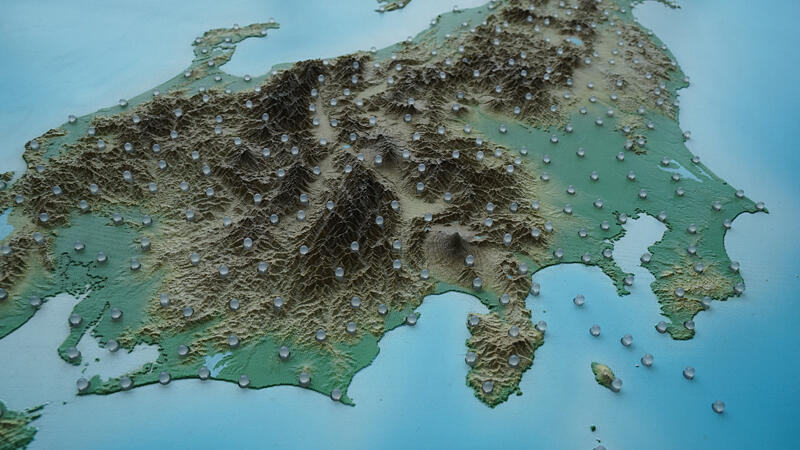
To learn more about the specifics of his research, we asked him to talk about two of the papers he has worked on in the past. The first paper he spoke of was 'Accuracy of Quantitative Precipitation Estimation Using Operational Weather Radars: A Case Study of Heavy Rainfall on 9−10 September 2015 in the East Kanto Region, Japan.' This research focused on analyzing the accuracy of estimations using partially blocked radar beams, and provided extremely useful information for minimizing, and managing, the damage resulting from flash flooding. Shakti received the Young Author Excellent Paper Award of the Japan Society of Hydrology and Water Resources (JSHWR) for this outcome, a very significant achievement. He said, "I was very honored to receive this award, and am determined to continue my research into the future."
The second outcome we discussed was the paper "Quick Exposure Assessment of Flood Inundation: A Case Study of Hitoyoshi City in Kumamoto Prefecture, Japan." This paper was undertaken in response to the previously mentioned flooding event in Kyushu and was important in aiding emergency responses and assessing the socio-economic impact of heavy rainfall and flooding events. According to Shakti, the idea behind the flood inundation tool developed in the study came from social media, "If there is a flood and a member of the public takes a photo and post it online, like with social media, we can use that information, trace it and find the location. This can be used to make an inundation map, and then be shared with the public." Shakti's research at NIED continues, and we look forward to seeing what future developments come out from his lab.
The role of International Brain Circulation in disaster research
This series of special interviews serves to highlight the importance of the international circulation of talented researchers, and Shakti is a wonderful example of this. His journey from Nepal to Europe and now his permanent position in Japan has allowed him to experience various approaches to water-related disaster research. From experiencing the use of C-band radar in Europe, applying X-band to his research here in Japan, and his recent development of flood inundation mapping, the impact of his experience of International Brain Circulation is clear to see.
His research field in particular, while having regional differences, is very applicable across the world. "Looking at the recent trends in extreme rain and flooding, Asia is being significantly impacted. Extreme rainfall and flooding are common in many parts of Japan, China, South Korea and India, disrupting the lives of millions. Any innovation in this region will be applicable not only to the Asia-Pacific region, but also to the rest of the world", he stated.
For Dr. Shakti, the internationalization of research environment means, more than anything, collaboration with international communities, fostering the exchange of ideas and expanding research opportunities. Circulation of both researchers and their ideas have the potential to provide significant advances in his research field. "Japan is at the forefront in terms of possessing observed and historical data in natural disaster science and any innovative research outputs can be applied internationally." Shakti has been extended the opportunity to speak at a wide range of international conferences and at international universities in the past to share his knowledge and is actively working towards finding more opportunities for global collaboration and the sharing of information.
We asked Shakti to give some insights into the differences seen between the research environments in Nepal, Belgium and Japan and he shared his thoughts. "When we consider water-related disasters, Japan and Nepal face very similar problems because of their comparable geography. However, the techniques used, and the scientific development of Japan is more advanced. In Belgium, these issues appear to be less prevalent, however, there has been an increasing trend in severe rainfall and flooding events in Belgium and Germany." He also touched on the different types of radar used. Japan has over 35 X-band radar stations, while in Belgium C-band is more common. Despite this, significant research in the field of hydrology continues to be undertaken there. He finished by highlighting that because of the shared-nature of the issues faced by all three countries, in terms of weather-related disasters, the exchange of information should be encouraged and the innovative outcomes coming out of each country should be shared to promote the development of resilient societies. Particularly, due to the geographical similarities between Japan and Nepal, he is of the view that more technology exchange or transfer could be promoted between the two countries, and to this end, he published a research paper on this topic.
In terms of choosing Japan as a base for research, he gave three major reasons. "First, Japan is extremely dedicated to advanced and intensive observation practices. Second, the country is increasingly seeing extreme rainfall and their associated flooding events, making research into the area of great importance. Finally, the research environment itself is extremely supportive, and over the previous 10 years, I have observed that the government actively supports and promotes researchers working in the country." He also credited NIED as a research organization for its impact on his research and for the potential for international shared use of its high standard facilities such as the rainfall simulator, one of the largest ones in the world. "I think you will be visiting the rainfall simulator later. With this facility, we can create about 300 mm/h of artificial rainfall, conduct various experiments, such as recreating a landslide and examining the performance of radar and automated driving in torrential rain conditions. Such research infrastructure should be introduced to the outside to attract more international researchers to come to Japan for research or the exchange of information. Data availability and research infrastructure is a key factor for Japan to attract more talented individuals and become an international research hub. I think that in terms of publicity and communication, there is still a gap to be filled. "
He also credited Dr. Maki as a huge influence on why he remained in Japan and attributed a large part of the success he has had to his mentor, and the high level of support that he received from Dr. Maki and his wife during his time here in Tsukuba. "They took care of me, supported and encouraged me like parents. I consider myself incredibly fortune to have them as my respected Japanese guardians."
Dr. Shakti is another fantastic example of the benefits that the international circulation of talented researchers can bring to Japan's research environment and going into the future, he hopes to contribute further to the field. To achieve this goal, he has already initiated an interdisciplinary research project focused on international collaboration and we have high expectations for impactful outcomes from this.
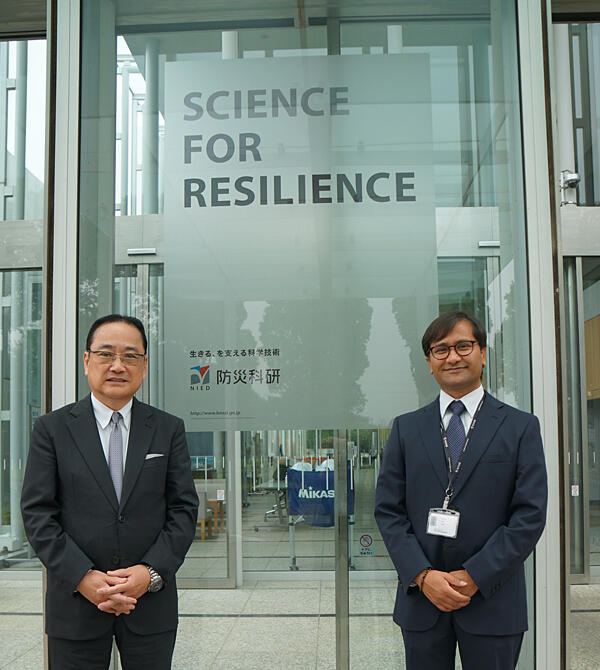
Future goals and advice for researchers
When we asked him for some advice for researchers who are hoping to work in the disaster resilience field, or to live and work here in Japan, Shakti had some sage words. "Natural disasters are common worldwide; however, their impact is different between counties. Japan is uniquely placed in this field due to its geological characteristics, long history of promoting high quality research and collection of abundant, informative data." He highlighted the fact that this innovative environment is perfect for foreign researchers looking to do highly innovative, top-class research, both in disaster resilience and in other fields.
As climate change progresses and the frequency of storms and flooding events increase, Shakti expects that the importance of disaster resilience research will also increase. As part of this, he hopes to be involved in the development of new data, and in the utilization of digital twins, to enhance the flood resilience of cities and infrastructure into the future. He stated, "Digital twins can play a crucial role in presenting, visualizing and comparing different regions and the options or countermeasures available in response to flooding events." His passion for the field and desire to develop innovative new technologies came through strongly during our interview.
NIED encourages their researchers to develop products to apply their research outcomes to society. "This year, my colleagues from my department and I applied for a patent and let's see how it goes. But mostly, I focus on research papers because the outcome can be shared quickly." Shakti also has plans to organize international workshops and meetings among the Asia and Pacific regions, hoping to establish Japan as a center for excellence in the field of disaster resilience.
We also discussed the challenges facing Japan. "Do I recommend Japan? Of course, yes. I can be a good example myself. But I think there should be also some policy, including some focused on the recruitment of researchers. I think the government needs to think about how to make new policy to allow this, and how to change the current ones." Shakti commented, continuing, "In Japan, there are many PhD students who have travelled from overseas. But once they complete their studies, most of them return to their country. If you want to attract those PhD students to stay in research in Japan, there should be good policy to facilitate that. A policy statement should be translated into concrete action. But I know it's sometimes not easy."
"Each researcher has his/her own motivations. Their priority may go to money sometimes, or to the surrounding environment or other such things. I prioritize doing a good job in a peaceful work environment. If I conduct high-quality research and develop effective methods applicable to various societies, it will be easier for me to work anywhere. I consider myself fortunate because I feel that everything has been going well, and I haven't encountered any difficulties or problems during my time here at NIED Japan. Additionally, I'm grateful for the support I've received from my colleagues in the department, the management committee, and the other staff members at NIED."
"If some good cases in Japan like mine are introduced to young researchers, that would be encouraging. This kind of publicity may be important to attract people. It should be known to more people that there are good opportunities to be working in Japan." Shakti shared an idea of his regarding this, explaining "Sometimes, I consider creating a documentary video about my journey. For example, a video interview spanning from Nepal to Belgium and Japan, showcasing my struggles, studies, family life, and research work, which I think could be interesting. This would serve as evidence-based storytelling for young people around the world, with the aim of increasing their attraction and motivation to engage in research in Japan in the coming days."
From his childhood days of crossing his local river on the way to school, to his ocean hopping journey in pursuit of innovative research outcomes, Dr. Shakti P.C. serves as a fantastic example of the importance of International Brain Circulation for promoting innovative research outcomes. Making use of his background in Nepal, his experience of analyzing radar rainfall data in hydrological modeling in Belgium, and now his 10 years of experience as a researcher at NIED, he has provided invaluable insights into water related disaster research. His work as a researcher in Japan into the innovative use of technology to aid in realizing more resilient societies is ongoing, and we wait with great expectation for his next research outcome.
(Interview conducted at NIED Tsukuba Headquarters on July 19, 2023)
Interviewer: Yoshihiro Higuchi,
Director for Global Strategic Issues, JST
Editing: Matthew Drum,
Editor in chief of Science Japan, APRC, JST
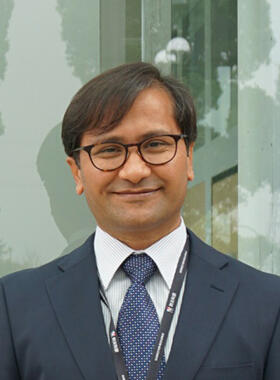
Profile
Shakti P. C.
Chief Expert Researcher at National Research Institute for Earth Science and Disaster Resilience (NIED).
After completing undergraduate and master's degrees in meteorology at Tribhuvan University, he moved into a teaching position at the same university. Following this, he received a scholarship and moved to Belgium to pursue a master's in water resources engineering at Katholieke University in Belgium, Europe. Came to Japan in 2010 and completed a PhD at Tsukuba University, after which he moved into a role at NIED. Has been in his current role since April 2023.
<About NIED>
NIED is a national research and development agency. A range of research is conducted under the principal objective of realizing resilient society to natural disasters by enhancing science and technology for disaster risk reduction. NIED aims for science and technology capable of predicting and preventing disasters, mitigating damage, and achieving recovery and reconstruction after disasters.
NIED homepage: https://www.bosai.go.jp/e/
Produced by the Science Japan Editorial Team




